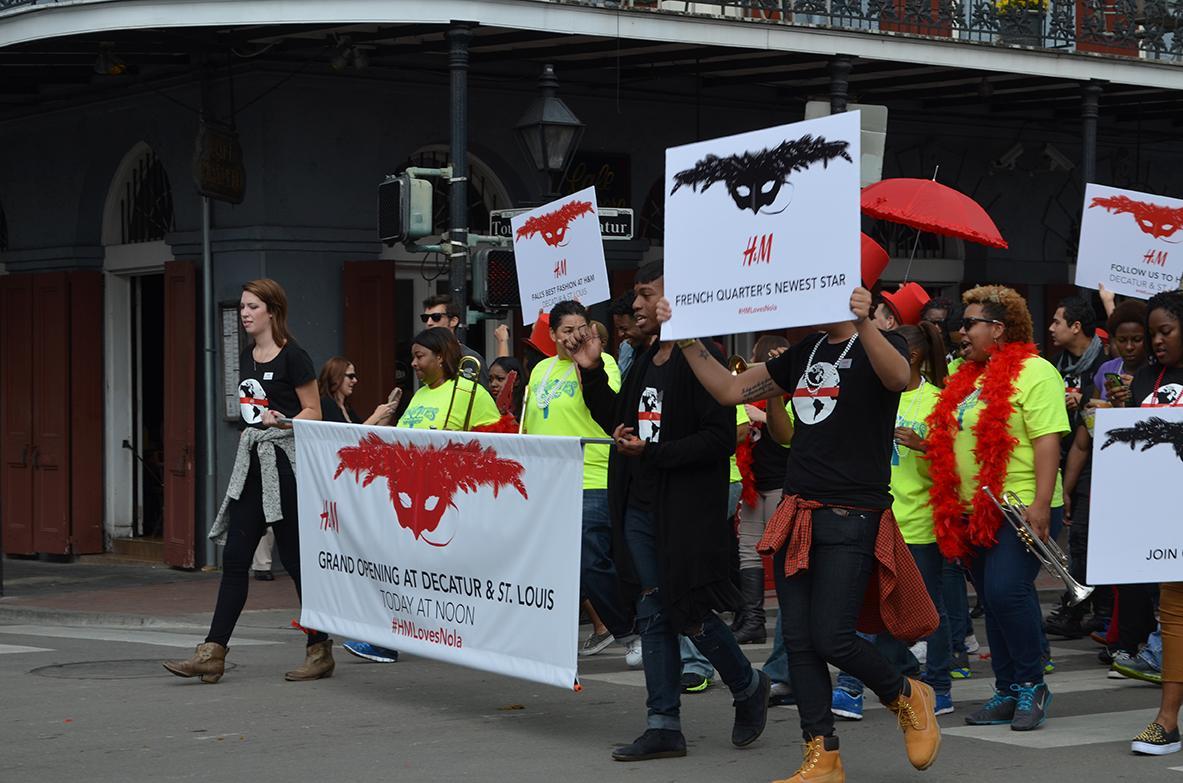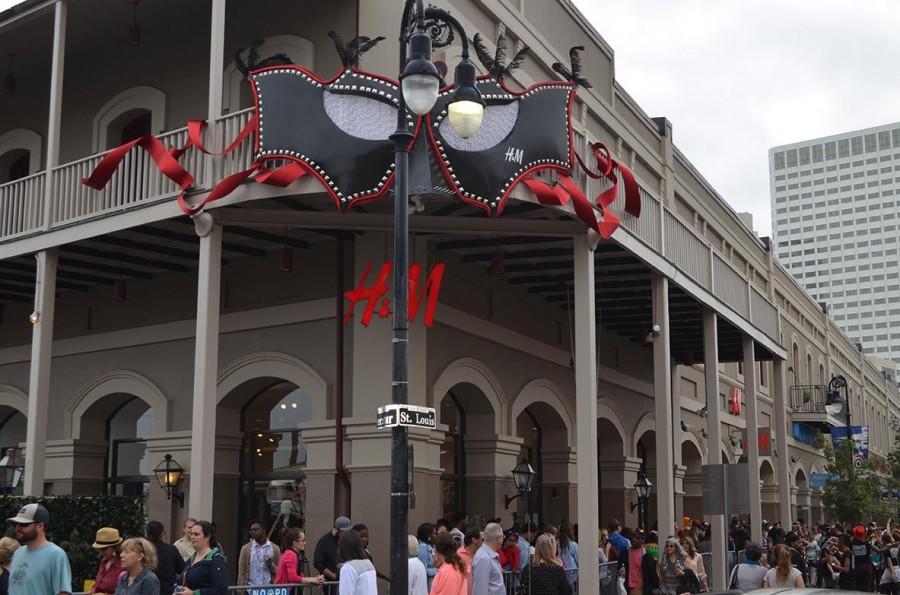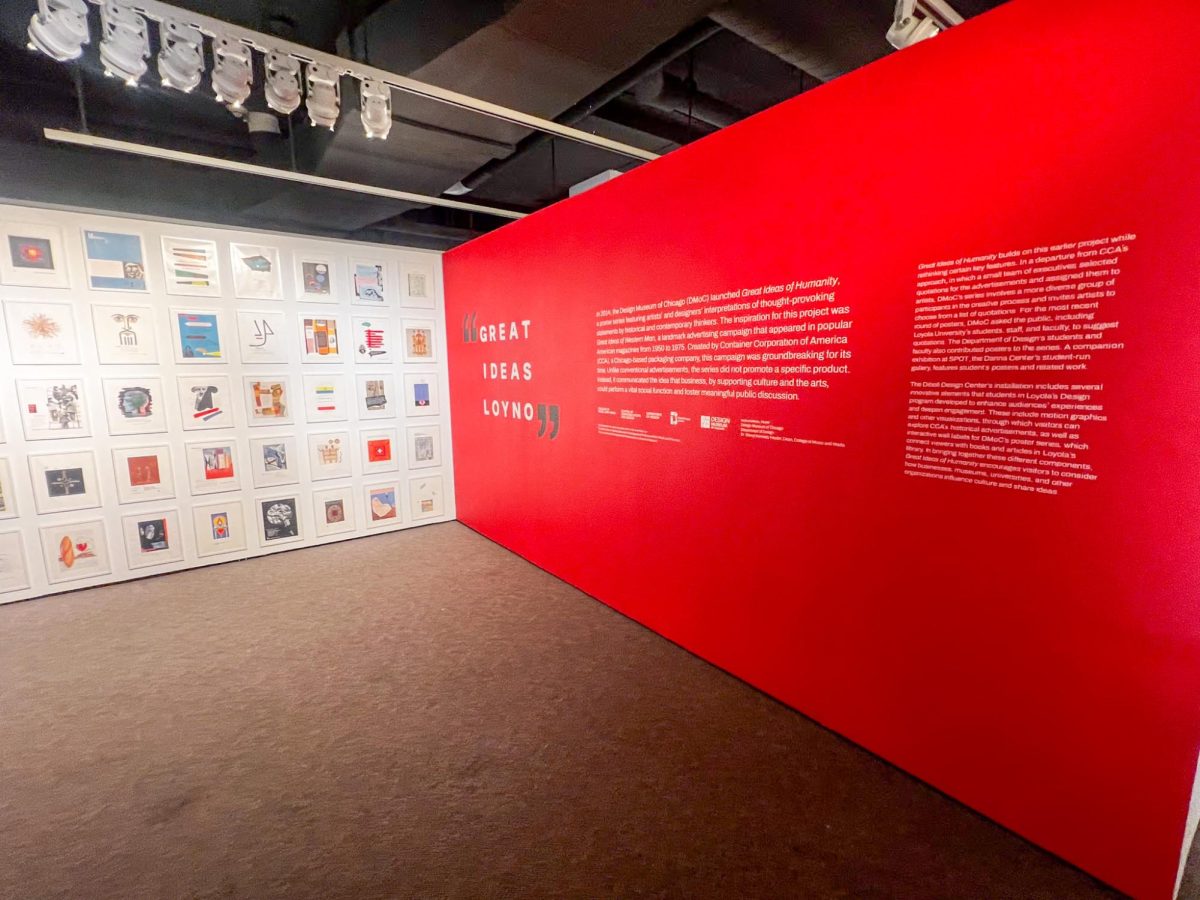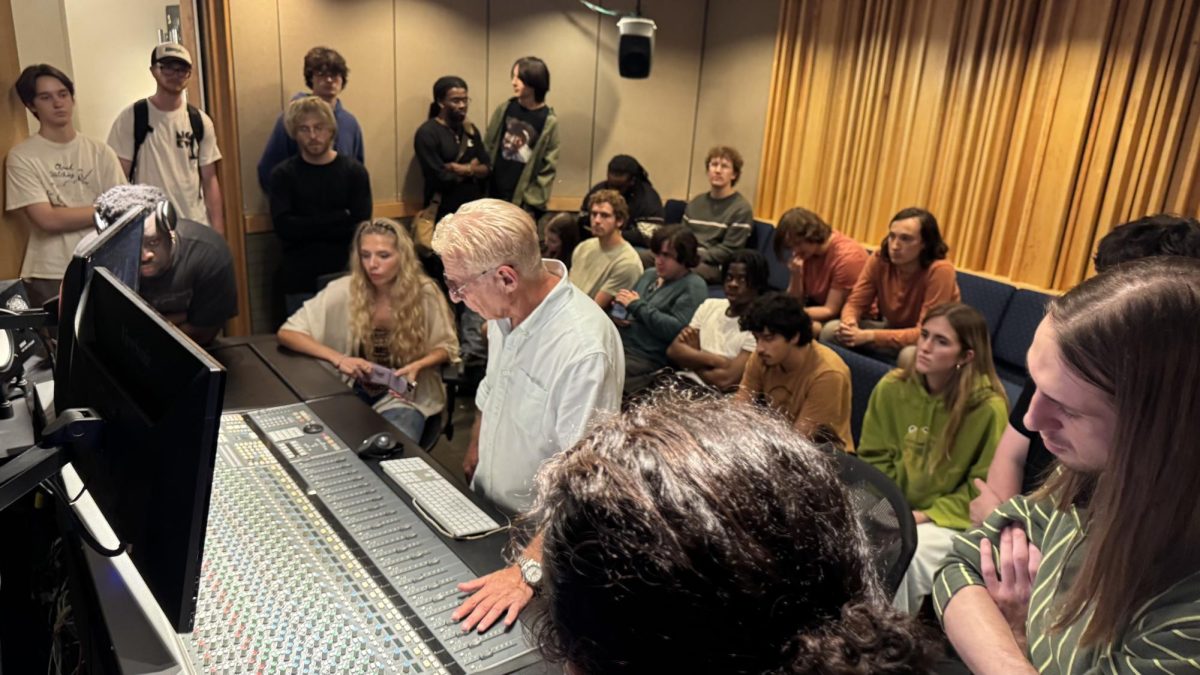Karen Miranda, psychology junior, never knew how popular H&M was until she camped out in line with her friends – for 16 hours.
When Miranda and hundreds of other shoppers waited in a line spanning five blocks, the retail giant was seen fully living up to its hype.
H&M, one of the world’s largest fast fashion retailers, opened its first Louisiana location in the French Quarter on Nov. 16 to a line of enthusiastic shoppers, many of whom, like Miranda, had camped out the night before in anticipation.
“It was great,” Grace Hamm, a marketing junior at Loyola and part-time sales adviser at the new H&M location, said. “We really tried to interact with the crowd that had been standing outside since midnight.”
Miranda was among the first to enter the store’s grand opening.
“We waited about 16 hours in that line from 8:30 Friday night, until the opening at noon the next day,” Miranda said. “I even got a $300 gift card.”
Shoppers were excited to get their hands on H&M’s “fast fashion.”
Annamma Joy, a professor of marketing at the University of British Columbia who specializes in consumer behavior and brand management, attributes the popularity of fast-fashion chains like H&M to their ability to mimic current luxury fashion trends before they hit stores – selling new products at significantly cheaper prices.
“Disproportionate from other fashion companies, fast-fashion companies, like H&M, make a lot of money, and that can only be summed up to the fact that as humans, we love it,” Joy said. “We look at the clothes that come down the catwalks and we want to mimic what we see, and fast-fashion allows us to do all of that at such a low cost.”
Stephanie Crofton, associate dean of the Earl N. Phillips School of Business at High Point University, said that consumers, especially young consumers, are adopting fast-fashion for various reasons.
“Not only do fast-fashion companies deliver consistently cheaper products, but they’re constantly giving customers newer products – such that any visit to a store is likely to present the buyer with new product selections,” Crofton said.
Hamm said she believes that H&M’s low prices will allow the store to become a hub for college students on a budget.
“You can get some great quality clothing for much cheaper than other retail stores at H&M,” Hamm said. “So I know that college kids, including myself, will try to be in there all the time.”
Joy said greater quality clothing means less waste, and although she still believes the fast-fashion industry has a long way to go when it comes to sustainability, she thinks that H&M has exhibited greater strides at adopting sustainable practices and reducing waste than the retail giant’s fast-fashion competitors.
With H&M’s “Conscious Initiative,” they are striving to make more sustainable choices in fashion affordable and desirable to as many people as possible, and have made the first step by being the first fashion company to launch a global recycling initiative.
“Sustainibility is an important part of H&M’s culture, and we strive to reduce the environmental impact of clothes throughout their lifecycle,” an H&M representative said.
However, when hundreds of young consumers line up and wait hours for clothing, the last thing on their minds is sustainability, Joy said.
For shoppers like Miranda, it was all about the experience.
“If I could relive the experience, I would. They are memories, so it was definitely worth it,” Miranda said.
Nia Porter can be reached at naporter@loyno.edu

The H&M employees paraded through the streets to promote the store opening. (TIFFANY KUDIWU/Photo Editor)













